Many owners of private houses and cottages are thinking about building a veranda. This ...
|
|
Wooden houses have long established themselves as environmentally friendly and with a high term ... |
There are many varieties of foundations. If during the construction of residential buildings it is necessary ... |
How to stick wallpaper correctly
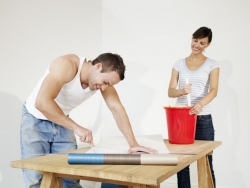
Despite the abundance of finishing materials, pasting walls with wallpaper remains the most common way of decorating. Having pushed the wallpaper, you can very quickly convert the room: make a light room, revive the interior or arrange style accents.
To get the desired result, you need to choose the right wallpaper and follow all the rules of repair work.
- Choosing finishing material: Features of different types of wallpaper
- How to properly glue phlezeline wallpaper: step -by -step instructions
- How to properly glue vinyl wallpaper: nuances of work
- How to properly glue paper wallpaper: features of cutting and gluing
- How to properly glue angles with wallpaper
- How to properly glue wallpaper from glass -water
- How to properly glue different wallpaper: general recommendations
Choosing finishing material: Features of different types of wallpaper
The process of wall decoration begins with the selection of facing material. If a choice is made in favor of traditional wallpaper, you need to decide on the best option. All types of wallpaper represented in the construction market are characterized by certain characteristics. Based on the qualities of the material, the conditions of their operation and personal preferences, you need to make a choice.
Paper wallpaper The most popular type of wallpaper in the world. There are many advantages, but some disadvantages are also inherent in the canvases. Among the main advantages include:
- loyal pricing policy allows you to often update the interior of the room;
- wide selection of colors and drawings;
- environmental friendliness and hypoallergenicity of the material wallpaper are ideal for children's rooms;
- the material passes the air well, thereby preventing the formation of mold.
Cons of paper products:
- the wallpaper quickly lose their original appearance fade under the sun's rays, abrasion and wear out;
- most paper wallpaper cannot be washed;
- such material is not suitable for use in wet rooms.
Advice. When planning the walls of walls with paper wallpaper, it is better to choose modern duplex (two -layer) canvases. They are stronger, less prone to pollution. Some duplex wallpapers can be washed.
Vinyl wallpapers. The main advantages of finishing material: moisture resistance and beautiful appearance. Such wallpaper is based on non -woven or paper, the upper layer is treated with polyvinyl chloride. Vinyl wallpapers are produced by a wide range of drawings and textures (embossed).
Vinyl coating protects decorative decoration from sunlight, humidity and reduces dust attracting. Such wallpapers are better suited for the corridor, bathroom and kitchen. Most PVC-fraud is suitable for painting.
The lack of vinyl wallpaper is poor permeability. PVC film does not pass air, the walls do not breathe. As a result, the microclimate worsens in the room, the room must be ventilated more often.
Important! Some manufacturers use innovative technologies and produce wallpaper with vinyl coating with a porous structure. This allows the material to pass the air in sufficient volume.
Vinyl wallpaper is not cheap, but their high cost is fully paid off by a long service life, the coating retains decorativeness up to 10 years.
To date, several types of vinyl wallpaper are used:
- a solid vinyl coating on the base is applied a solid base that can withstand significant mechanical damage;
- a smooth vinyl coating forms a smooth, even surface, more susceptible to damage;
- silkography is one of the most spectacular types of wallpaper; Hot tightness technology gives the impression that the wallpaper contains natural silk threads;
- the foamed vinyl is considered the most durable and dense, thanks to a deep embossed structure.
Floselywain wallpaper They are made on the basis of cellulose and consist of 2 layers: non-woven and polymer coating. The combination of two layers led to the presence of the following characteristics:
- high strength of non -woven wallpaper is stronger than textile and paper;
- the ability to hide the irregularities of the wall and microcracks;
- the wallpaper is easy to glow, subject to technology, the material is not deformed and not bubble;
- air passing;
- the choice of the texture of the wallpaper is relief or smooth;
- wallpaper falls well on plaster, wood, cement, slabs and other materials.
Important! A distinctive feature of pasting with flesiline wallpaper mounts on a wall coated with glue.
Textile wallpaper It is made on the basis of flesilin and paper. From above, the base layer is covered with textiles (jute, polyester, linen, cotton, etc.). It is the upper layer that largely determines the final cost of finishing material. Fabric wallpapers play not only a decorative role, they have noise and thermal insulation properties.
With the help of such wallpaper, it will be possible to create an original interior. However, they are characterized by negative aspects:
- the exactingness when gluing an inexperienced master will be difficult to do the work;
- done cleaning intolerance limits the sphere of use of textile wallpaper.
Fibling wallpaper A wall coating made of glassons of different thicknesses with subsequent impregnation. Glass wallpaper is a unique finishing material with a number of undeniable advantages:
- fire properties;
- naturalness and safety of use;
- high strength and resistance to any damage;
- durability is the service life of about 30 years;
- dust is repelled and easy to care;
- due to the well -woven structure, air is passed.
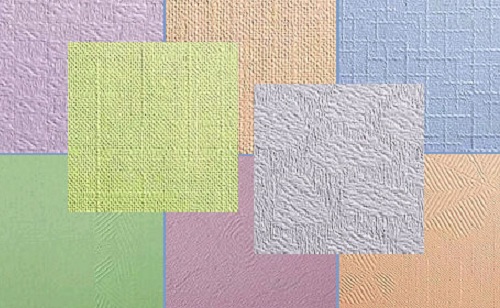
How to properly glue phlezeline wallpaper: step -by -step instructions
Preparation of the base
The process of pasting any wallpaper, including non -woven ones, begins with thorough preparation of the walls. This stage takes a lot of time, but the final result largely depends on the quality of its implementation. What measures are held without fail? The previous coating from the walls must be removed, and the surface is leveled.
Removing old wallpaper. To soften the coating, you can use the usual soap solution. To improve the effect, it is advisable to add a little wallpaper glue. Washing old wallpapers or very dense first must be cut a little, inflated notch, and then moisturized with soap solution. After such processing, leave the wallpaper for a while the coating will swell and it can easily be removed with a spatula.
Sometimes the procedure has to be repeated several times. To facilitate the removal of wallpaper, you can purchase a special tool, the solution developed for this purpose is well absorbed and softens the material.
Removal of enamel and old paint. In Khrushchevs, Stalinks and apartments of the Brezhnev era, walls covered with paint are often found. If the coating exfoliates well, then it is cleaned with a spatula. However, in the vast majority, to remove old paint, you have to make a lot of effort. The enamel is tapped with an ax and cleaned with a flat cutter or chisel.
Removing whitewashing. The paint based on the water emulsion or whitewashing is pre -wetted with soap water, and then removed by a spatula. A thin layer of old whitewash is easily washed off with hot water.
The next step is the alignment of the walls. All irregularities, cracks and other defects must be plastered or puttled. If the surface crumbles and crumbles, then it is advisable to treat it with fastening primer.
Necessary tools
To complete the work, you will need:
- roulette;
- laser level or vertical plumb line with cord;
- a roller with a long pile;
- brush for smoothing wallpaper;
- plastic spatula with a soft edge for rolling wallpaper;
- construction knife for cutting wallpaper;
- metal spatula (narrow);
- foam sponge;
- glue tray;
- pencil;
- ladder.
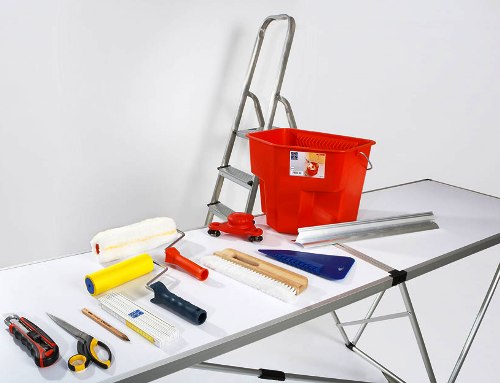
Calculation of material and wall marking.
To calculate the desired number of wallpaper, you should know the dimensions of the room. As a rule, the height of the ceilings ranges from 2.5-2.8 m, the length of the roll is 10 m. That is, one roll should be enough in three stripes. Knowing the width of the roll and the perimeter of the room can easily calculate the total number of stripes.
Most non -woven wallpaper have even high -quality edges. Therefore, they are glued to the bunch. In this case, the compound of the panels looks as a single whole surface. To facilitate further work, it is advisable to mark the markings.

From the corner of the room at an equal width of the roll (0.5 1.2 m), apply a vertical line. To test evenly, use the level. The lines are applied throughout the wall.
Stages of wrapping wallpaper
Preparation of wallpaper. It is recommended to cut the blanks on the entire perimeter of the room. It is necessary to take into account the location and layout of the drawings.
Important! Before cutting off the next canvas, you should measure the height of the walls in different places, for example, every 30-40 cm. Very often the walls have differences and the length of different cuts can differ significantly from each other.
If the wallpaper has a large drawing, then it must be selected. You can find out the size of the fitting from the icon on the label. When marking and cutting, it is important to control so that the image matches and does not have to finish a piece of the canvas from below or from above.
Important! Many experts recommend leaving a margin of 10-15 cm when cutting with a pattern. However, for placement with high ceilings, this size must be increased.
For example, if the required fitting size is 48 cm, and the height of the ceilings is 2.5 m, then the length of each workpiece will be 2.88 m. According to the rules of the cut of wallpaper, the length of the workpiece should be multiple of the fitting, i.e. 48 cm, but not less than the height of the room.
After the calculation, you can proceed to the cut. Cover the floor with plastic wrap and roll the roll with the front side. To measure the length of the cut (in our example 2.88 m) and make a cutting with a knife. With the help of a long ruler, bend the laying at the cutting level, check the evenness of the fold and cut off the sheet.
Dissage the next sheet and verify the fitting of the drawings of two paintings. If the blanks are combined well, then you can make a cut.
Preparation of glue. To glue the wallpaper, it is necessary to choose the adhesive composition corresponding to the type of material: paper, vinyl, flesilin, textiles or fiberglass. Before mixing the glue, familiarize yourself with the instructions.
General procedure for making glue:
- Dry mixture pour into containers for stirring.
- Gently insert water into the powder with a thin stream, stirring with a whisk.
- Leave the mixture and mix again, removing lumps.
Gluing wallpaper. Direct walling of the walls is carried out in the following sequence:
- View instructions on the label label. Perhaps the manufacturer recommends a special sticker technology, patterning patterns or cites advice on how to start gluing wallpaper.
- Since the wallpaper is glued to the end, you can start work with any part of the room. Some experts recommend starting from a window or doorway.
- Apply glue to the surface of the wall. It is advisable to miss a large area than the width of the roll this gap to provide a reliable coupling of the edges of the canvas with a wall.
- Strictly vertically arrange the first section on the quality of its placement will depend on the result of subsequent work. Gently smoothed a sheet of wallpaper with a rubber spatula. Textured wallpaper is smoothed with a roller, not too pressing against the wall. Excess glue to expel to the side where there are no wallpaper.
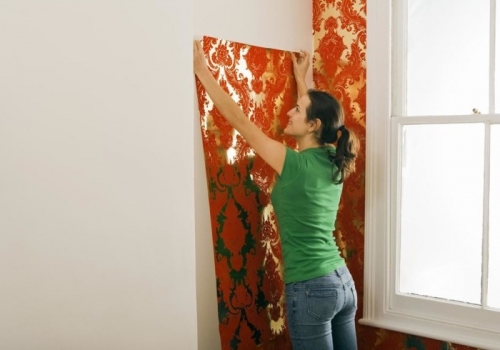
- Cut the rest of the wallpaper from the bottom. It is important not to overdo it, since the skirting board will block only 3-4 cm of the wall.
- Cut the excess wallpaper on top, leaving the minimum supply for the ceiling baseboard. To cut a sharp knife.
- Remove the traces of the glue from the ceiling wipe the surface with a damp sponge. Get rid of the remnants of glue and on the corner seams. Some adhesive manufacturers assure that the composition after drying becomes invisible, but you should not risk dried glue glistening ugly.
- The next section of the roll is glued to the previous sheet. The non -woven wallpaper after drying is not compressed, so the gaps do not occur. Roll the second cloth vertically along the wall, simultaneously moving to the first sheet and combining drawings.
- Iron the joint with a roller. Cut the excess wallpaper on top/bottom and remove the remaining glue.
How to stick wallpaper correctly: video
How to properly glue vinyl wallpaper: nuances of work
The order of gluing the vinyl canvas is not much different from pasting with non -woven wallpaper. However, several nuances can be distinguished:
- The choice of glue must be approached responsibly. Vinyl wallpapers have quality to stretch when applying glue and compressed after drying it. A poor -quality adhesive composition may not cope with such a load and the seams will simply disperse.
- When gluing on the walls, a moderate amount of glue is applied to prevent excessive stretching of the canvas.
- In some cases, glue is allowed not only to the surface of the wall, but also on the canvas.
- Particular attention is paid to the seams. They must be thoroughly rolled up with a roller so that they do not disperse.
How to glue wallpaper correctly: photo joining of paintings
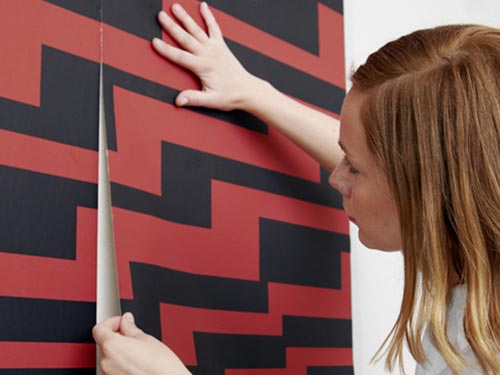
How to properly glue paper wallpaper: features of cutting and gluing
The technology of pasting walls with paper wallpaper depends on their variety: Simeplex or Duplex. Simplex single -layer wallpaper is applicable only for perfectly even walls, the canvas is very thin and all cracks and fossa will be visible through it. The laying of such wallpaper is overlapped. Duplex glued only in vault.
The main requirement that should be fulfilled when working with paper wallpaper: after applying glue to the sheet, it must be left for 2-7 minutes to ripen (time depends on the density of the material).
When slicing wallpaper, attention is paid to the presence of the edge. Some foreign manufacturers produce wallpaper with an edge only one edge, domestic from both. In dense canvases glued to the water, the border is cut off on both sides, in thin wallpaper on one. It is convenient to cut off the nucleus on the chair in the unnecessary edge is removed, and the wallpaper rolls back into a roll.
Another nuance when working with classic wallpaper wall decoration by borders. You can glue the decor only after the wallpaper dries completely. Typically, for drying paper, it is necessary for 12-32 hours. This period depends on the amount of glue spread, the density of the material and the conditions in the room.
How to properly glue angles with wallpaper
Outdoor overlap:
- Give the distance from the last glued wallpaper strip to the corner.
- Cut off a sheet of wallpaper, the width of which is 2.5 cm larger than the measured distance.
- Glue the strip, bending the excess wallpaper to the reverse angle.
- With direct angle, the remainder is glued over, in other cases, an overlap on vertical marking.
- Pass along the corner with a sharp knife, applying a ruler. At the same time, you need to press the edges. Remove the scraps.
The finish of the inner angle:
The main rule: on the angle, you never need to lay a whole blade of wallpaper. If this condition is neglected, then folds and bulges are formed.
- Measure the distance from the corner to the last strip of wallpaper and add 2 cm.
- Cut off the desired piece of wallpaper and glue on the wall, capturing the corner.
- Squeeze the paper tightly against the wall, leaving it with a blunt item.
- Clean the remaining piece with a small vehicle on the adjacent wall.
- Apply the ruler to the joint of the walls and draw, cleaning the excess material.
How to properly glue wallpaper in the corners: video
How to properly glue wallpaper from glass -water
When gluing with glass wallpaper, it is important to observe some rules:
- Glue is applied to the wall, not on the canvas.
- To work, you need to use glue for heavy types of wallpaper.
- At first glance, glass -tissue wallpapers have equivalent surfaces, but this is not so. The front side, according to international standards, is turned inside in the roll. The wrong side of some manufacturers is marked with a strip of blue or gray.
- The time of complete dried glass wallpaper is 24 hours.
- After drying, the wallpaper can be decorated and painted. It is advisable to pre -arrange the surface of the surface to be economical consumption of decorative material and paint.
How to properly glue different wallpaper: general recommendations
- Before pasting the walls or ceiling with wallpaper in wet rooms, the surface must be treated with a fungicidal mixture. This will protect the coating from the appearance of the fungus.
- The readiness of the walls before gluing can be checked experimentally:
- glue a piece of polyethylene using tape to the wall;
- leave the wholefan for a day;
- if after 24 hours, evaporates appeared inside the film, then it is too early to start pasting; If the coleofan remained dry, then the wall is completely dry and is ready for further decoration.
- To avoid the appearance of folds and bubbles, pasting must be fulfilled subject to conditions:
- it is advisable to perform work at a temperature of 23-25C;
- walls, just covered with wallpaper, must be protected from drafts until the coating completely dries;
- it is extremely undesirable to get sunlight on wallpaper.
How to properly glue the ceiling with wallpaper: video

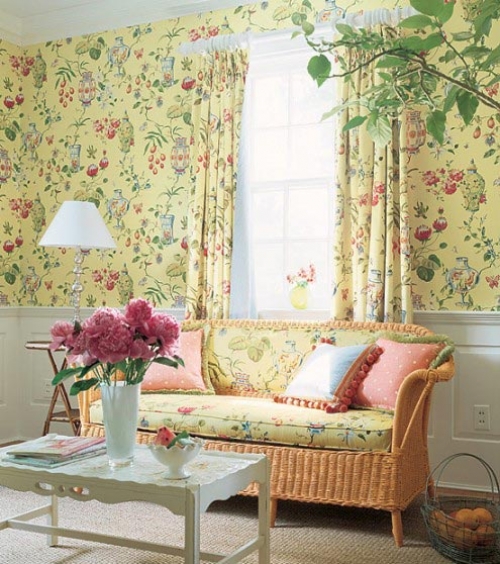
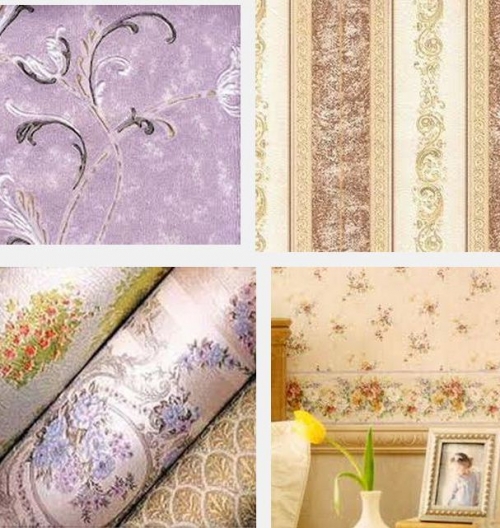
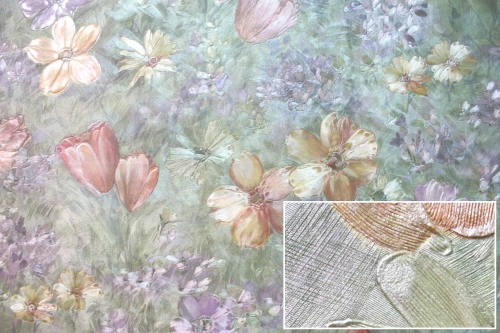
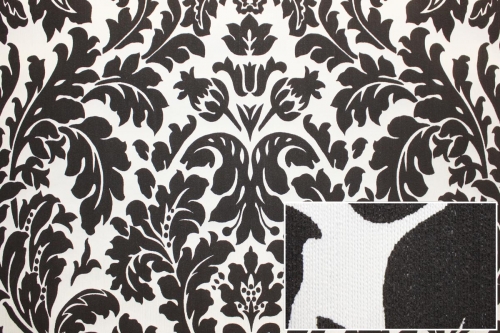
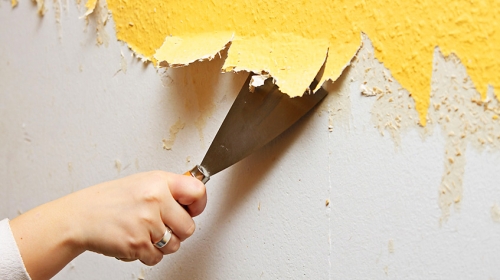
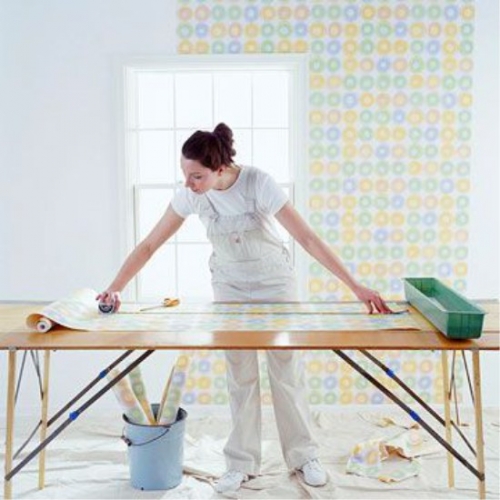
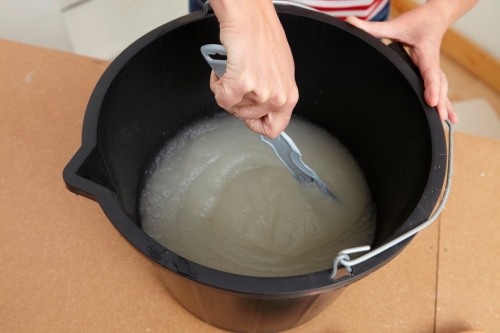
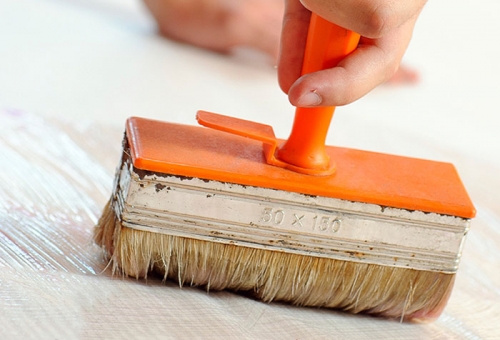
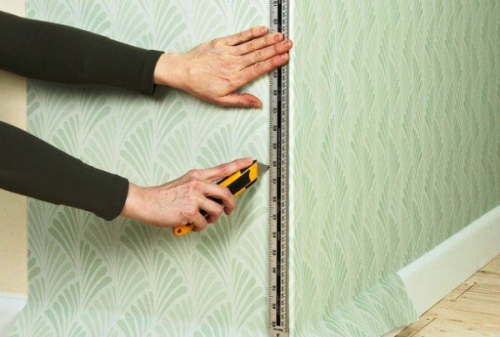
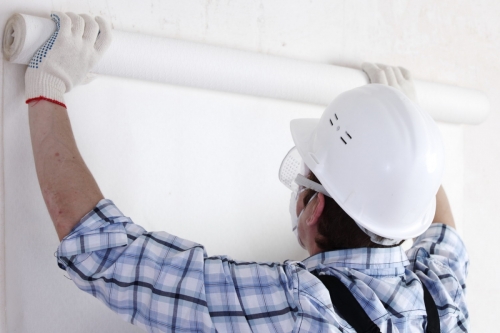
Glue such wallpapers very
It is very easy to glue such wallpapers, we took non-woven http://boi-boi.ru/caselio for painting, so that there were no problems with this at all. Only the wall smeared. Perfectly even edges, there were no problems at the joints, well, the walls were even.